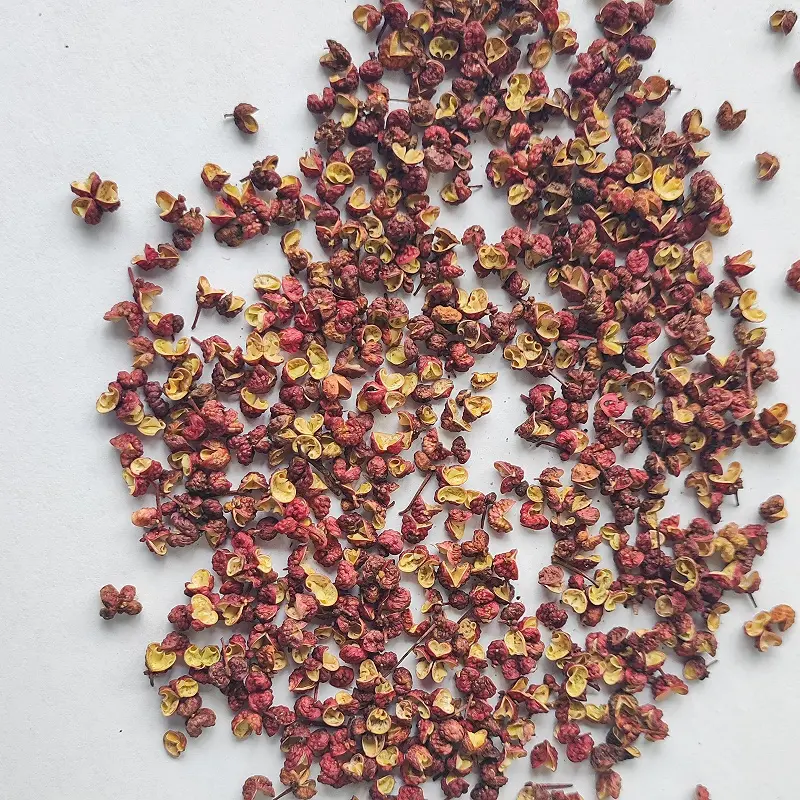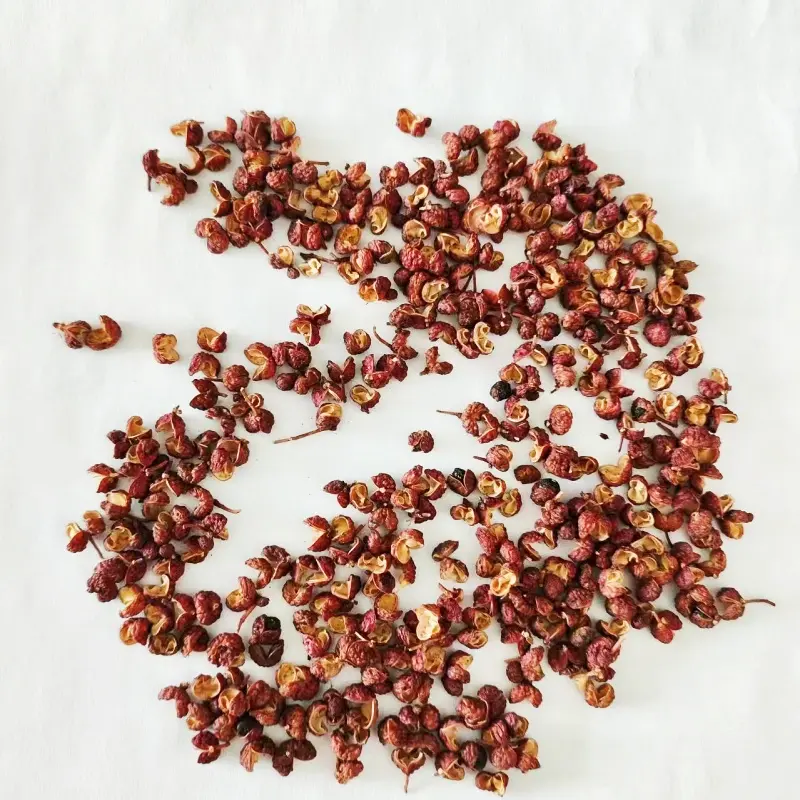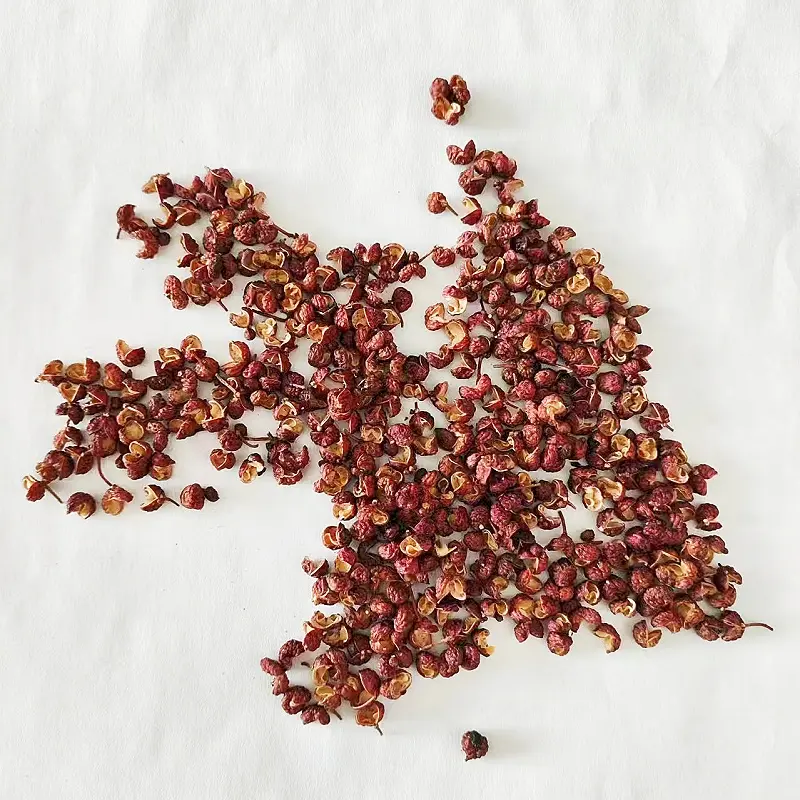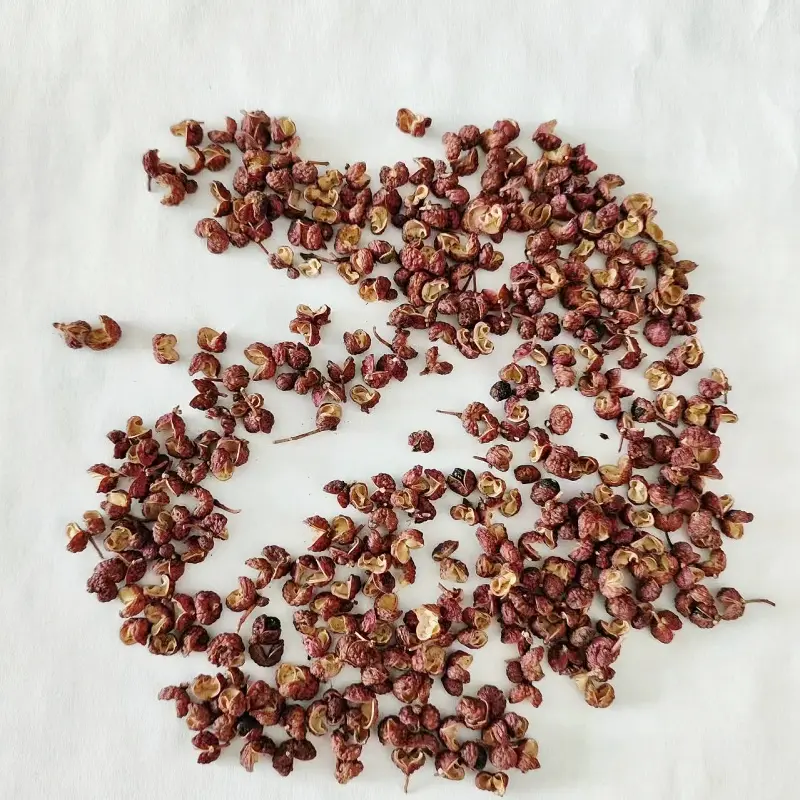Spices have long played a crucial role in culinary traditions and medicinal practices across the globe. Among the many aromatic plants in the ginger family, Amomum Tsaoko and Cardamom often cause confusion for home cooks, spice enthusiasts, and even seasoned chefs. While they share some botanical similarities and come from the same Zingiberaceae (ginger) family, they are, in fact, distinct in origin, appearance, flavor, and culinary use.
Amomum Tsaoko, also known as Chinese black cardamom or Cao Guo (草果), is a lesser-known spice primarily used in Chinese and Southeast Asian cooking. It is prized for its strong, smoky aroma and medicinal properties, particularly in Traditional Chinese Medicine (TCM). On the other hand, Cardamom—especially the green variety—is widely known and loved in Indian, Middle Eastern, and Scandinavian cuisines. It is often used in sweet dishes, teas, and spice blends like garam masala.
The confusion between Amomum Tsaoko and Cardamom is understandable. Not only do they share a similar name, but their pods can also look alike to the untrained eye—especially when comparing Amomum Tsaoko to the larger Indian black cardamom. However, the two differ significantly in their flavor profiles, usage, cultural context, and botanical classification.
This article aims to demystify the differences between Amomum Tsaoko vs Cardamom, offering a side-by-side comparison to help you better understand how to use each spice effectively and appropriately in cooking and wellness practices.
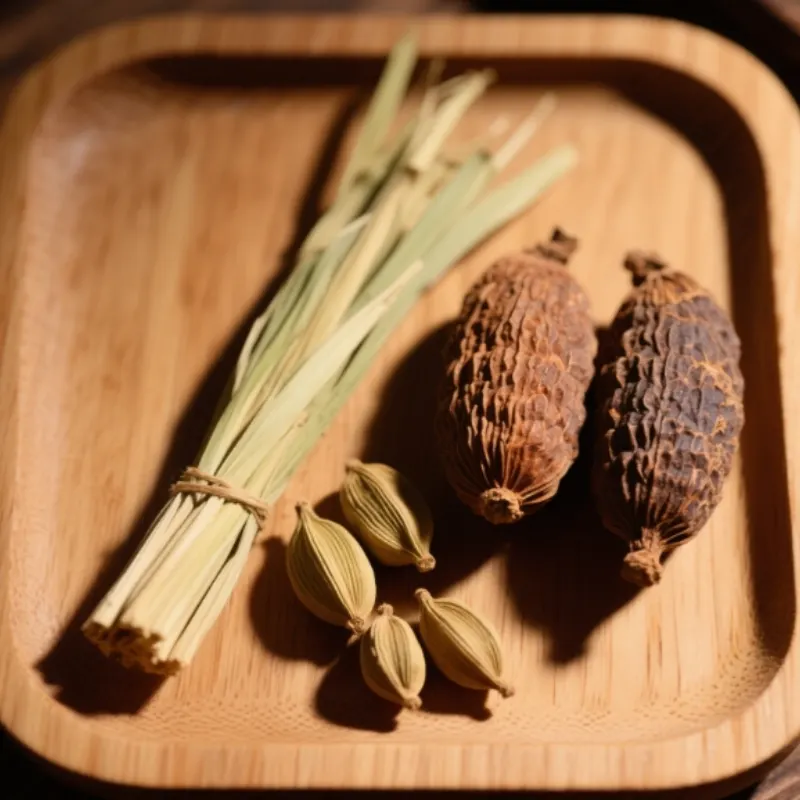
Botanical Background
To truly understand the difference between Amomum Tsaoko and Cardamom, it’s essential to start with their botanical roots. Though these spices belong to the same plant family—Zingiberaceae, or the ginger family—they represent different genera and species, each with its own unique geographical origin, physical characteristics, and historical significance.
Amomum Tsaoko
Scientific Name: Amomum tsao-ko
Common Names: Tsaoko, Chinese Black Cardamom, Cao Guo (草果)
Native Region: Yunnan Province (China) and parts of Southeast Asia (Vietnam, Laos)
Amomum Tsaoko is a species of flowering plant native to the subtropical forests of southwestern China and the mountainous regions of Southeast Asia. It thrives in warm, humid environments at elevations of 1,000 to 2,500 meters. In China, it is mainly cultivated in Yunnan Province, where the climate and terrain are ideal for its growth.
The plant itself grows up to 2–3 meters in height, with long, slender leaves and striking pink or red flowers. The fruit, or pod, is the part used as a spice. It’s large (compared to common cardamom), dark brown, ridged, and woody, containing numerous small, aromatic seeds. The pods are harvested when mature and then dried over an open flame or in the sun, a process that gives them their characteristic smoky aroma.
Amomum Tsaoko plays a prominent role in Traditional Chinese Medicine (TCM). It's believed to aid digestion, relieve bloating, and warm the body, making it especially valued in cooler climates and wintertime cooking. In the culinary world, it’s commonly used in rich, hearty dishes like braised meats, hot pots, and stews, contributing a deep, smoky, slightly peppery flavor.
Despite being called “Chinese black cardamom” in English, Amomum Tsaoko is not the same as Indian black cardamom (Amomum subulatum), though both share similar smoky qualities.
Cardamom
Scientific Names:
Green Cardamom: Elettaria cardamomum
Black Cardamom (Indian): Amomum subulatum
Common Names: Green Cardamom, True Cardamom, Indian Black Cardamom
Native and Cultivated Regions: India (Western Ghats), Nepal, Bhutan, Sri Lanka, Guatemala
Cardamom is one of the oldest and most widely used spices in the world. The two main types—green cardamom and black cardamom—belong to different genera and offer very different flavor profiles and uses.
Green Cardamom (Elettaria cardamomum)
Green cardamom, often referred to as “true cardamom,” is native to the rainforests of southern India. Today, it is also grown extensively in Guatemala, which has become the largest commercial exporter of the spice.
This plant grows in tropical climates and reaches heights of 2 to 4 meters. Its pods are small, green, and oval-shaped, containing tiny black seeds with a sweet, floral, and slightly citrusy aroma. Green cardamom is highly prized in global cuisines, from Indian curries and chai to Scandinavian pastries and Middle Eastern desserts. It’s also a key ingredient in spice blends like garam masala and chai masala.
In Ayurveda, green cardamom is used to balance digestion, freshen breath, and alleviate nausea. Its refreshing, cooling nature makes it suitable for both sweet and savory dishes.
Black Cardamom (Indian) (Amomum subulatum)
Indian black cardamom is botanically closer to Amomum Tsaoko but distinct in both species and usage. It grows in the eastern Himalayas, including parts of Nepal, Bhutan, and northeastern India. The pods are larger than green cardamom, dark brown to black, and have a tough, wrinkled exterior.
Unlike the sweet, delicate flavor of green cardamom, black cardamom is smoky, bold, and slightly mentholated. It is used almost exclusively in savory dishes—particularly in Indian cuisine—for preparing biryanis, lentils, curries, and spice blends.
It’s important to note that while both Amomum Tsaoko and Indian black cardamom have similar color and smoky qualities, they are not interchangeable. Each brings a unique regional character and flavor complexity to the dishes they are used in.
Comparative Summary
Despite their overlapping family lineage, Amomum Tsaoko and the two types of Cardamom occupy distinct spaces in the world of spices. Tsaoko is rooted in Chinese culinary and medicinal traditions, with a bold, smoky flavor best suited for long-simmered dishes. Green cardamom, with its sweet, aromatic scent, is a favorite in both sweet and savory contexts across South Asia and the Middle East. Indian black cardamom, though visually similar to Tsaoko, delivers a different flavor experience, more resinous and camphor-like.
Understanding these botanical and cultural differences is key to selecting the right spice for your dish—and appreciating the rich heritage each one brings to the table.

Appearance and Aroma
Although Amomum Tsaoko, green cardamom, and black cardamom (Indian) are all members of the ginger family, their visual characteristics and aromatic profiles set them apart dramatically. Understanding their differences in appearance and smell is one of the quickest ways to distinguish them, especially when selecting spices in a market or preparing them for cooking.
Amomum Tsaoko
Amomum Tsaoko pods are among the largest of all cardamom-like spices. Each pod is roughly 2–4 cm in length, dark brown, and has a distinctly woody and ridged texture. The exterior is hard, often deeply grooved, and can feel quite solid when compared to other spice pods. When split open, the pod reveals clusters of tiny black seeds, which are the primary source of its flavor and aroma.
The aroma of Amomum Tsaoko is bold and unmistakable. It has a smoky, pungent scent, often described as earthy with subtle notes of camphor and citrus. This smokiness is partly due to traditional drying methods, where pods are cured over open wood fires. As a result, Tsaoko carries a deep, warming fragrance that pairs well with rich meats and long-simmered broths, particularly in Chinese and Southeast Asian cuisines.
Green Cardamom
Green cardamom is visually quite distinct. The pods are small (typically 1–2 cm), spindle-shaped, and pale green in color, with a smooth, slightly glossy surface. The pods are relatively thin-walled and easy to crush or open. Inside, they contain a cluster of small, sticky black seeds packed with essential oils.
In terms of aroma, green cardamom is delicate and sweet. It is known for its floral, citrusy, and slightly herbal fragrance, making it one of the most fragrant spices in the world. Its scent is refreshing and uplifting, often associated with Indian chai, Arabic coffee, and various desserts and pastries. When ground fresh, it releases an intense aroma that can elevate both sweet and savory dishes with just a small pinch.
Black Cardamom (Indian)
Indian black cardamom (Amomum subulatum) falls somewhere between Tsaoko and green cardamom in size and appearance. Its pods are medium to large, dark brown to black, and have a wrinkled, tough outer shell. Although they resemble Amomum Tsaoko to the untrained eye, black cardamom pods are generally smaller and more curved, with a somewhat drier, lighter weight.
The aroma of Indian black cardamom is robust and distinctively camphor-like. It carries earthy, smoky, and slightly medicinal notes, often described as resinous or mentholated. This spice is used sparingly due to its potent fragrance, which can easily overpower lighter ingredients. It’s a staple in Indian cuisine, especially in rich gravies, meat stews, and rice dishes like biryani, where its bold flavor can stand up to intense heat and spices.
Key Differences at a Glance
| Spice | Pod Size & Color | Texture | Aroma |
|---|---|---|---|
| Amomum Tsaoko | Large, dark brown | Woody, ridged | Smoky, pungent, citrusy |
| Green Cardamom | Small, pale green | Smooth, soft | Sweet, floral, fresh |
| Black Cardamom (Indian) | Medium, dark brown/black | Wrinkled, tough | Camphor-like, earthy, smoky |
Understanding these differences in appearance and aroma helps ensure you choose the right spice for your dish—and avoid accidentally swapping one for another, which could dramatically alter the final flavor.
Flavor Profile
The flavor of a spice can completely transform a dish, and when it comes to Amomum Tsaoko, green cardamom, and black cardamom, each delivers a distinct sensory experience. Though they share a common heritage within the ginger family, their flavor profiles differ significantly in terms of intensity, complexity, and ideal culinary use.
Amomum Tsaoko
Amomum Tsaoko has a bold and smoky flavor that is both complex and layered. Upon tasting, it delivers a slightly bitter edge followed by subtle notes of citrus peel and a gentle menthol-like coolness on the palate. The bitterness is not overpowering but provides a balancing depth, especially when used in fatty or richly seasoned dishes. This distinctive combination makes Tsaoko a perfect match for braised meats, soups, and sauces, particularly in Chinese, Vietnamese, and Laotian cooking. Its robust flavor also holds up well in long, slow cooking methods, allowing the spice to mellow and integrate fully into the dish.
Green Cardamom
In contrast, green cardamom offers a completely different flavor experience. It is sweet, aromatic, and slightly herbal, with eucalyptus and lemon undertones that bring a bright, refreshing quality. Its flavor is delicate yet intense, capable of elevating both sweet and savory dishes without overpowering them. This makes green cardamom highly versatile—it is commonly used in Indian chai tea, rice puddings, pastries, and spice blends. When added to dishes, it imparts a clean, slightly resinous sweetness that pairs well with milk, sugar, citrus, and warming spices like cinnamon and cloves.
Black Cardamom (Indian)
Indian black cardamom (Amomum subulatum) has a flavor that’s bold, earthy, and deeply smoky, similar to Amomum Tsaoko but with more of a medicinal, camphor-like quality. Its intense flavor can be overpowering if used in excess, which is why it’s typically used whole and removed before serving. Black cardamom is a key ingredient in Indian curries, lentil dishes, and biryanis, where it lends a warming, almost savory-sweet complexity that complements hearty ingredients.
Each of these spices brings something unique to the kitchen. Amomum Tsaoko’s smoky and citrusy bitterness, green cardamom’s sweet and floral freshness, and black cardamom’s smoky and medicinal strength ensure that, while they may be related, their flavor profiles serve very different culinary purposes.
Culinary Uses
Each spice—Amomum Tsaoko, green cardamom, and black cardamom—plays a distinct role in the culinary traditions of the regions where it is used. Although they may appear similar, their applications in cooking differ significantly due to their unique flavor profiles and cultural significance. Understanding how and where these spices are used can help home cooks and chefs alike make informed choices in the kitchen.
Amomum Tsaoko
Amomum Tsaoko is a staple in Chinese cuisine, particularly in the southwestern provinces of Yunnan, Sichuan, and Guizhou. Known locally as Cao Guo (草果), it is typically used whole, either lightly crushed or simply added to cooking liquids to infuse dishes with its deep, smoky, and slightly citrusy aroma.
One of the most common uses of Amomum Tsaoko is in braised meat dishes, especially pork and beef. It pairs exceptionally well with fatty cuts, where its slightly bitter edge helps balance richness. It is also a key ingredient in hot pot broths, contributing a warming base flavor that complements chili, ginger, garlic, and fermented sauces.
In Sichuan cuisine, Tsaoko is often part of complex spice blends used in mala (numbing-spicy) dishes. In Yunnan cooking, it is sometimes added to spice pastes and slow-cooked soups. Its versatility also makes it suitable for marinades, especially when combined with other spices like star anise, cinnamon, and cloves.
Green Cardamom
Green cardamom is one of the most beloved spices in the world, widely used in Indian, Middle Eastern, and Scandinavian cuisines. Its sweet, floral flavor makes it especially popular in desserts and beverages.
In India, green cardamom is essential in sweets such as gulab jamun, kheer (rice pudding), halwa, and laddu. It’s also a defining flavor in masala chai, where it blends beautifully with black tea, milk, cinnamon, and cloves.
In the Middle East, green cardamom is used to flavor both desserts and coffee. A few crushed pods are often added to Arabic coffee (qahwa) to enhance its fragrance. It’s also used in rice dishes like maqluba and kabsa to provide a floral undertone.
Scandinavian baking has adopted green cardamom as a signature spice, particularly in Swedish and Finnish pastries such as kardemummabullar (cardamom buns) and sweet breads. It adds a warm, spicy-sweet aroma that complements cinnamon and nutmeg in baked goods.
Beyond sweets, green cardamom also appears in savory Indian dishes such as biryani, pilafs, and kormas, where it is usually used whole or lightly crushed to infuse the dish during cooking.
Black Cardamom (Indian)
Black cardamom, or Amomum subulatum, is a bold, smoky spice primarily used in Indian and Nepali cuisine. Due to its potent flavor, it is almost always used in savory dishes, and rarely—if ever—in desserts.
One of its primary culinary roles is in curries, where it provides a smoky, slightly mentholated base note that complements other strong spices like cumin, cloves, and cinnamon. It is often used in meat-based dishes, especially lamb, goat, or beef, where its intensity is balanced by long cooking times and rich gravies.
Black cardamom is also a core component of garam masala, the essential spice mix in many North Indian recipes. A few pods can dramatically enhance the depth of dal (lentils), masala sauces, and tandoori marinades.
In rice dishes, such as biryani and pulao, black cardamom is typically added whole during the cooking process to infuse the grains with its robust aroma. The pods are not usually eaten whole due to their tough, fibrous texture.
Though they share some visual and botanical similarities, Amomum Tsaoko, green cardamom, and black cardamom each occupy unique spaces in global cuisine. Tsaoko shines in savory, slow-cooked Chinese dishes, green cardamom lends its sweetness to desserts and drinks around the world, and black cardamom imparts smoky richness to Indian curries and rice. Recognizing their distinct culinary roles ensures they’re used to their fullest potential—enhancing dishes without overpowering them.
Medicinal and Traditional Uses
Beyond their culinary value, Amomum Tsaoko and cardamom have long been prized in traditional medicine systems for their healing properties. Both spices are used to promote digestive health, improve respiratory function, and enhance overall well-being—though they are rooted in different cultural practices: Traditional Chinese Medicine (TCM) and Ayurveda.
Amomum Tsaoko
In Traditional Chinese Medicine (TCM), Amomum Tsaoko (Cao Guo) is considered a warming herb. It is often prescribed to dispel cold, move Qi (energy), and support digestive function. The spice is believed to strengthen the spleen and stomach, especially when there is a buildup of internal dampness—often associated with bloating, indigestion, or a feeling of heaviness.
Tsaoko is commonly included in herbal formulas to treat colds, nausea, and diarrhea, particularly when caused by cold or damp conditions. Its slightly bitter and aromatic nature is said to cut through stagnation and enhance the effects of other herbs in a prescription. In some rural regions of China and Southeast Asia, Tsaoko is also used in home remedies for respiratory issues and detoxification.
Cardamom
In Ayurveda, both green and black cardamom have long been used for their carminative (gas-relieving) and digestive properties. Green cardamom, in particular, is thought to balance all three doshas—Vata, Pitta, and Kapha—making it a versatile and gentle remedy.
It is commonly used to relieve indigestion, freshen breath, and soothe the stomach. In Ayurvedic practice, cardamom is also believed to aid in respiratory health, helping to clear mucus and improve lung function. Black cardamom, with its warming and pungent qualities, is often used in cold weather remedies and tonics for bronchial congestion and asthma-like symptoms.
Together, these traditional uses reflect the enduring role of both spices in natural healing systems across cultures.
Where to Buy and How to Store
If you’re looking to purchase authentic Amomum Tsaoko and Sichuan peppercorns in bulk, Manna Foods is your trusted source. As a leading factory based in Sichuan, China—the origin of these spices—we ensure the highest quality and most genuine flavors. Our products are carefully harvested and processed to preserve their traditional aroma and potency. For bulk orders or inquiries, please feel free to contact us to learn more about our offerings and competitive pricing.
Best Practices for Storage
To maintain the rich flavor and aromatic potency of Amomum Tsaoko and cardamom, proper storage is essential. Both spices should be kept in airtight containers away from light, heat, and moisture, which can degrade their essential oils and reduce their effectiveness.
Store the pods whole whenever possible, as ground spices lose flavor more quickly. A cool, dark pantry is ideal—avoid storing near stoves, ovens, or windows where temperature fluctuations occur. For longer-term storage, you can keep spices in the refrigerator in sealed containers, but allow them to return to room temperature before use to avoid condensation.
By following these storage tips, you’ll preserve the full, authentic flavor of your spices, ensuring they remain vibrant in your cooking for months to come.
Summary Table: Key Differences
| Feature | Amomum Tsaoko | Green Cardamom | Black Cardamom (Indian) |
|---|---|---|---|
| Flavor | Smoky, citrusy | Sweet, floral | Earthy, smoky |
| Use | Chinese savory dishes | Desserts, drinks | Curries, rice dishes |
| Origin | China, SE Asia | India, Guatemala | India, Nepal |
Conclusion
While Amomum Tsaoko, green cardamom, and black cardamom share botanical ties, their differences in appearance, aroma, flavor, and culinary use make each spice unique. Tsaoko’s bold, smoky profile is ideal for rich Chinese dishes; green cardamom’s sweet, floral notes shine in desserts and teas; and Indian black cardamom brings deep, earthy warmth to curries and rice. Understanding these distinctions helps ensure you choose the right spice for the right dish. Whether for cooking or traditional medicine, each has its own place and purpose. For authentic, high-quality Amomum Tsaoko sourced directly from Sichuan, trust Manna Foods—your partner for genuine Chinese spices. Contact us today for bulk orders or more information.
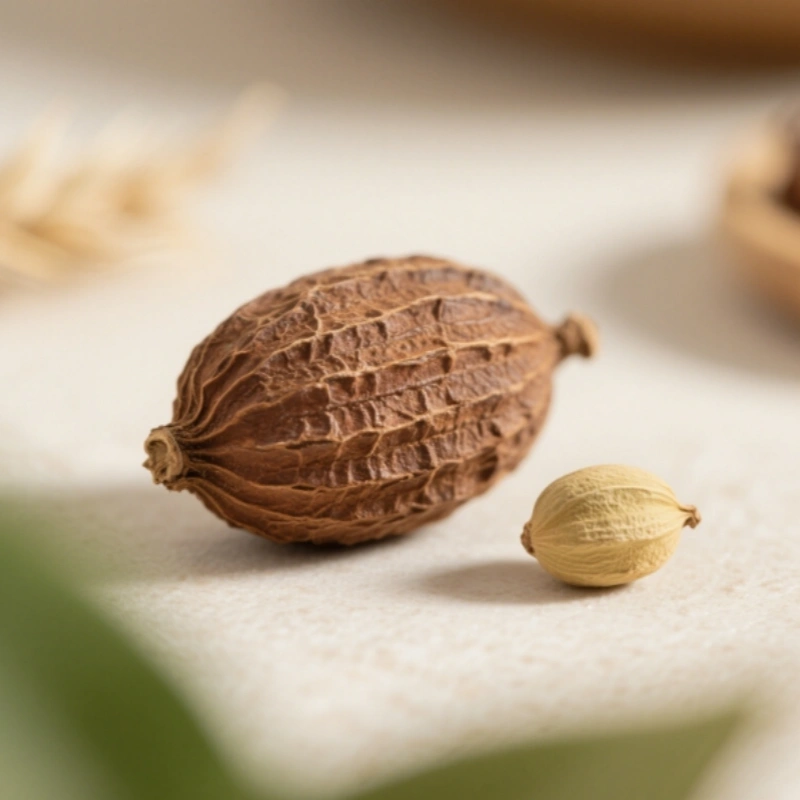

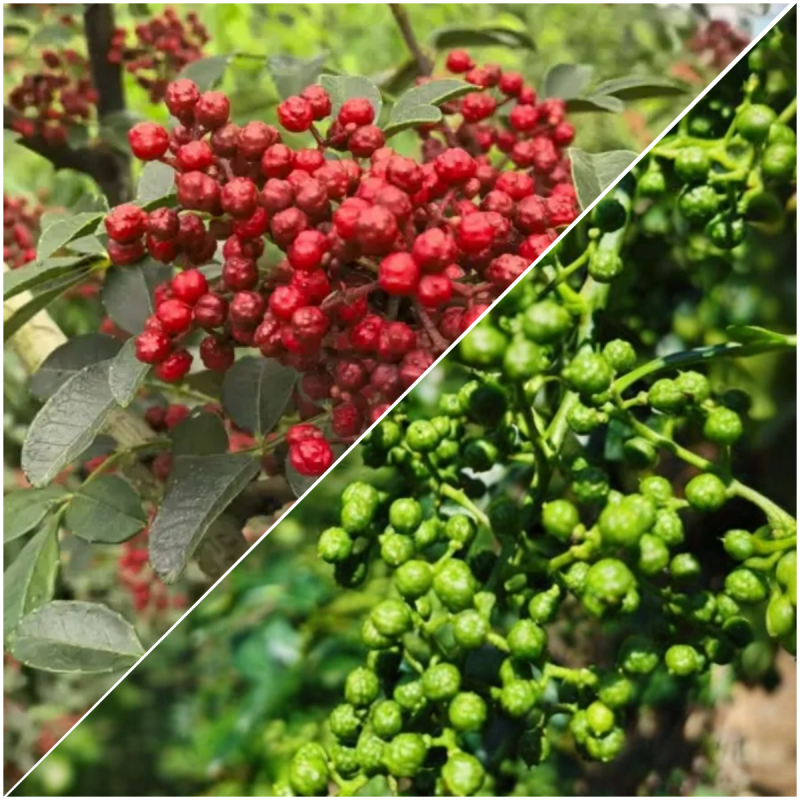
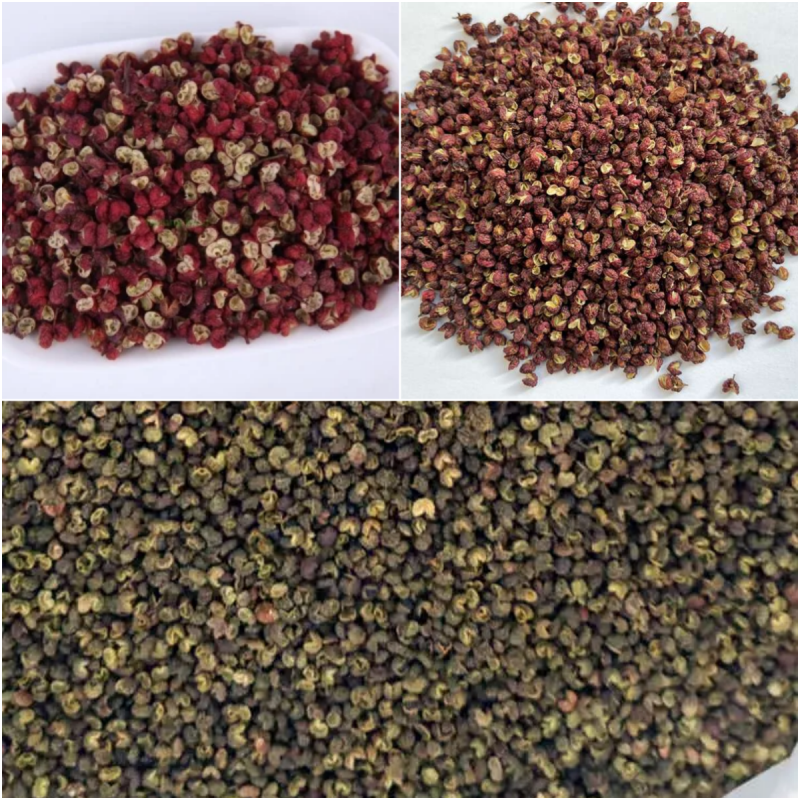
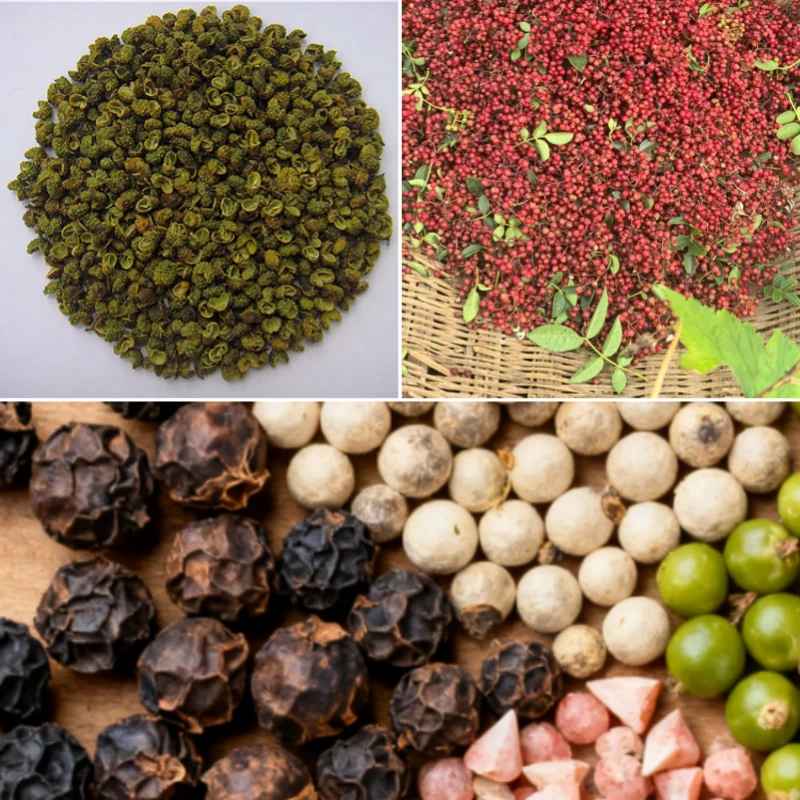
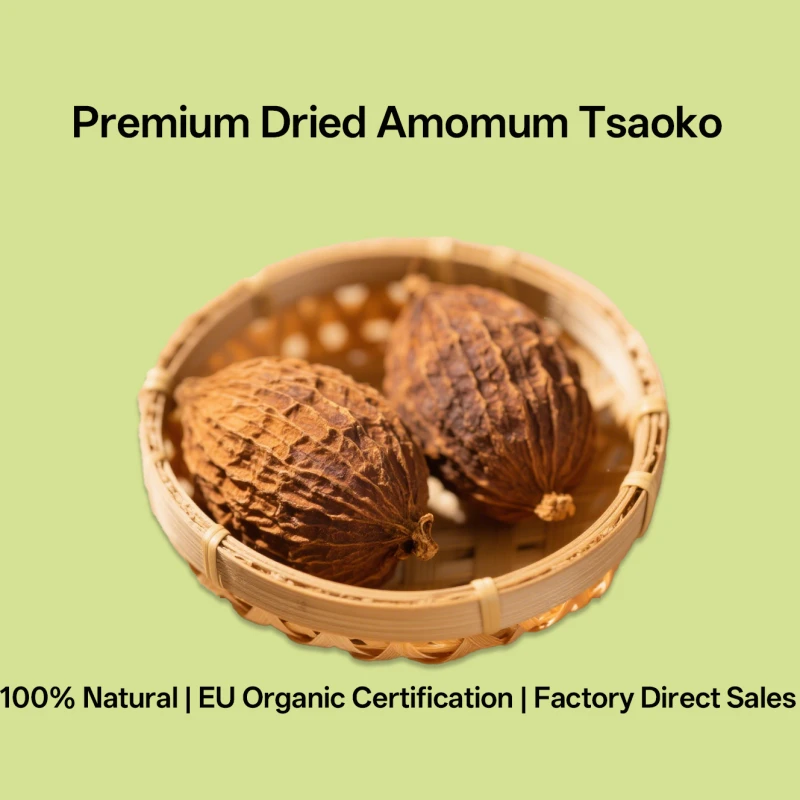
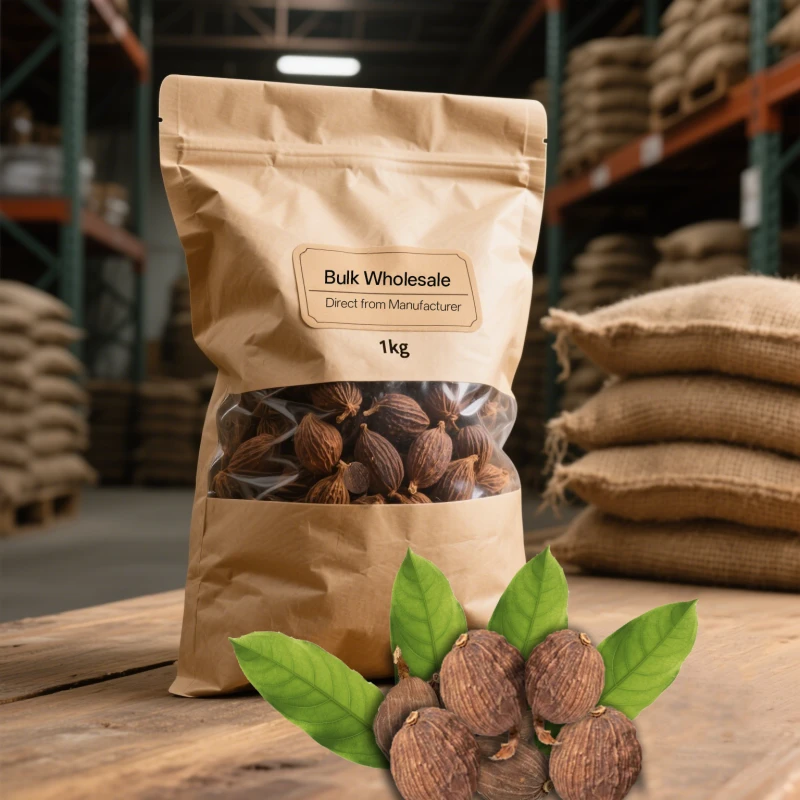

811.webp)
